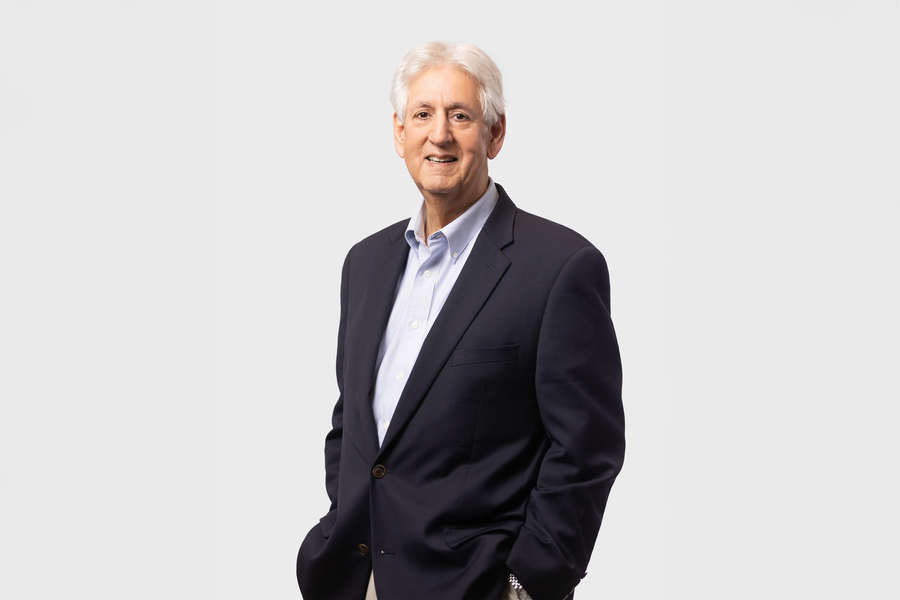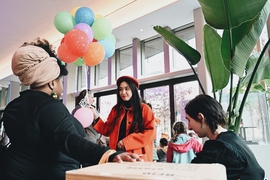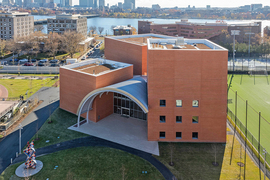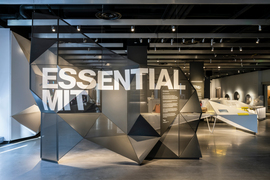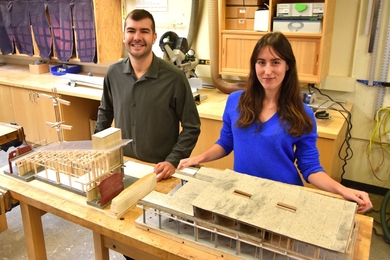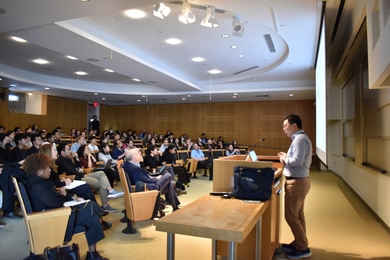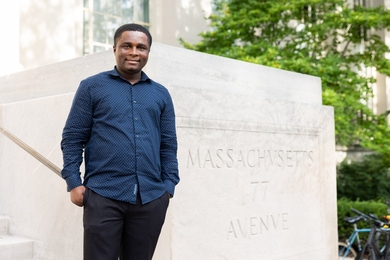MIT Provost Cynthia Barnhart has announced that Vice Provost for the Arts Philip S. Khoury will step down from the position on Aug. 31. Khoury, the Ford International Professor of History, served in the role for 19 years. After a sabbatical, he will rejoin the faculty in the School of Humanities, Arts, and Social Sciences (SHASS).
“Since arriving at MIT in 1981, Philip has championed what he calls the Institute’s ‘artistic ecosystem,’ which sits at the intersection of technology, science, the humanities, and the arts. Thanks to Philip’s vision, this ecosystem is now a foundational element of MIT’s educational and research missions and a critical component of how we advance knowledge, understanding, and discovery in service to the world,” says Barnhart.
Khoury was appointed associate provost in 2006 by then-MIT president Susan Hockfield, with a double portfolio enhancing the Institute’s nonacademic arts programs and beginning a review of MIT’s international activities. Those programs include the List Visual Arts Center, the MIT Museum, the Center for Art, Science and Technology (CAST), and the Council for the Arts at MIT (CAMIT). After five years, the latter half of this portfolio evolved into the Office of the Vice Provost for International Activities.
Khoury devoted most of his tenure to expanding the Institute’s arts infrastructure, promoting the visibility of its stellar arts faculty, and guiding the growth of student participation in the arts. Today, more than 50 percent of MIT undergraduates take arts classes, with more than 1,500 studying music.
“Philip has been a remarkable leader at MIT over decades. He has ensured that the arts are a prominent part of the MIT ‘mens-et-manus’ [‘mind-and-hand’] experience and that our community has the opportunity to admire, learn from, and participate in creative thinking in all realms,” says L. Rafael Reif, the Ray and Maria Stata Professor of Electrical Engineering and Computer Science and MIT president emeritus. “A historian — and a humanist at heart — Philip also played a crucial role in helping MIT develop a thoughtful international strategy in research and education."
“I will miss my colleagues first and foremost as I leave this position behind,” says Khoury. “But I have been proud to see the quality of the faculty grow and the student interest in the arts grow almost exponentially, along with an awareness of how the arts are prospering at MIT.”
Stream of creativity
During his time as vice provost, he partnered with then-School of Architecture and Planning (SAP) dean Adèle Santos and SHASS dean Deborah Fitzgerald to establish the CAST in 2012. The center encourages artistic collaborations and provides seed funds and research grants to students and faculty.
Khoury also helped oversee a significant expansion of the Institute’s art facilities, including the unique multipurpose design of the Theater Arts Building, the new MIT Museum, and the Edward and Joyce Linde Music Building. Along with the List Visual Arts Center, which will celebrate its 40th anniversary this year, these vibrant spaces “offer an opportunity for our students to do something different from what they came to MIT to do in science and engineering,” Khoury suggests. “It gives them an outlet to do other kinds of experimentation.”
“What makes the arts so successful here is that they are very much in the stream of creativity, which science and technology are all about,” he adds.
One of Khoury’s other long-standing goals has been to elevate the recognition of the arts faculty, “to show that the quality of what we do in those areas matches the quality of what we do in engineering and science,” he says.
“I will always remember Philip Khoury’s leadership and advocacy as dean of the School of Humanities and Social Sciences for changing the definition of the ‘A’ in SHASS from ‘and’ to ‘Arts.’ That small change had large implications for professional careers for artists, enrollments, and subject options that remain a source of renewal and strength to this day,” says Institute Professor Marcus Thompson.
Most recently, Khoury and his team, in collaboration with faculty, students, and staff from across the Institute, oversaw the development and production of MIT’s new festival of the arts, known as Artfinity. Launched in February and open to the public, the Institute-sponsored, campus-wide festival featured a series of 80 performing and visual arts events.
International activities
Khoury joined the faculty as an assistant professor in 1981 and later served as dean of SHASS between 1991 and 2006. In 2002, he was appointed the inaugural Kenan Sahin Dean of SHASS.
His academic focus made him a natural choice for the first coordinator of MIT international activities, a role he served in from 2006 to 2011. During that time, he traveled widely to learn more about the ways MIT faculty were engaged abroad, and he led the production of an influential report on the state of MIT’s international activities.
“We wanted to create a strategy, but not a foreign policy,” Khoury said of the report.
Khoury’s time in the international role led him to consider ways that collaborations with other countries should be balanced so as not to diminish MIT’s offerings at home, he says. He also looked for ways to encourage more collaborations with countries in sub-Saharan Africa, South America, and parts of the Middle East.
Future plans
Khoury was instrumental in establishing the Future of the Arts at MIT Committee, which was charged by Provost Barnhart in June 2024 in collaboration with Dean Hashim Sarkis of the School of Architecture and Planning and Dean Agustín Rayo of SHASS. The committee aims to find new ways to envision the place of arts at the Institute — a task that was last undertaken in 1987, he says. The committee submitted a draft report to Provost Barnhart in April.
“I think it will hit the real sweet spot of where arts meet science and technology, but not where art is controlled by science and technology,” Khoury says. “I think the promotion of that, and the emphasis on that, among other connections with art, are really what we should be pushing for and developing.”
After he steps down as vice provost, Khoury plans to devote more time to writing two books: a personal memoir and a book about the Middle East. And he is looking forward to seeing how the arts at MIT will flourish in the near future. “I feel elated about where we’ve landed and where we’ll continue to go,” he says.
As Barnhart noted in her letter to the community, the Future of the Arts at MIT Committee's efforts combined with Khoury staying on through the end of the summer, provides President Kornbluth, the incoming provost, and Khoury with the opportunity to reflect on the Institute’s path forward in this critical space.
